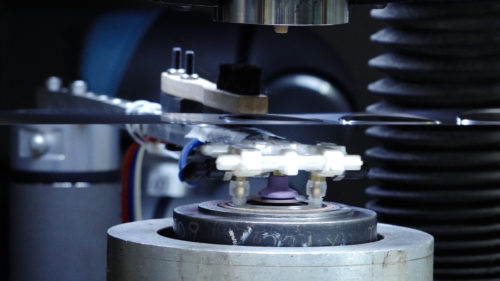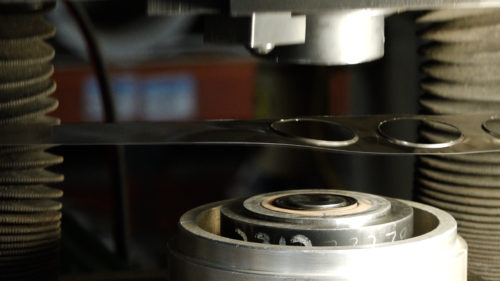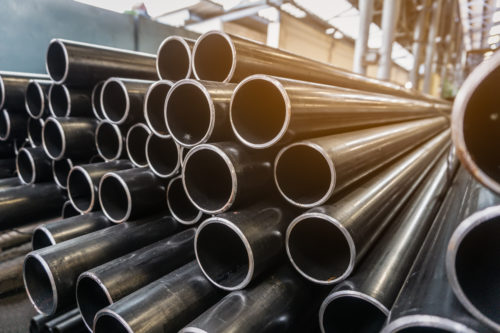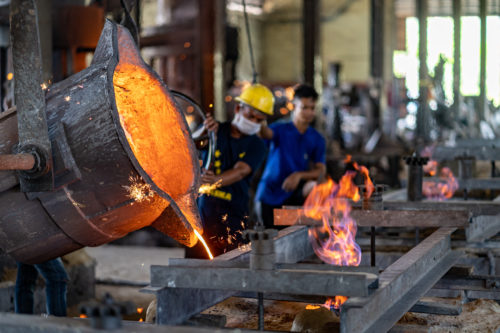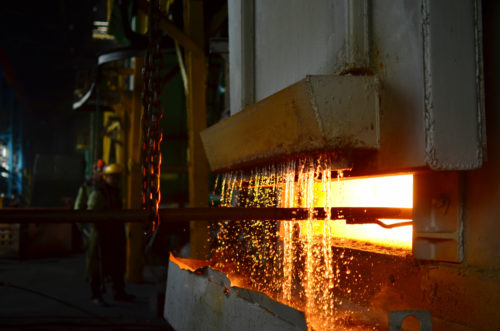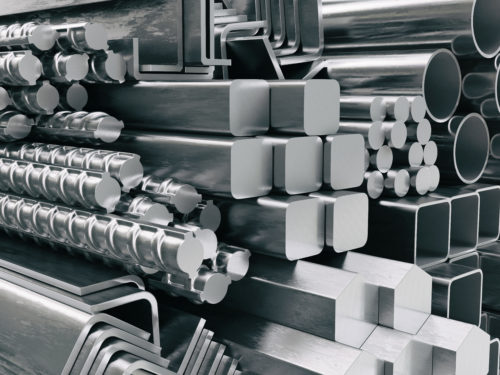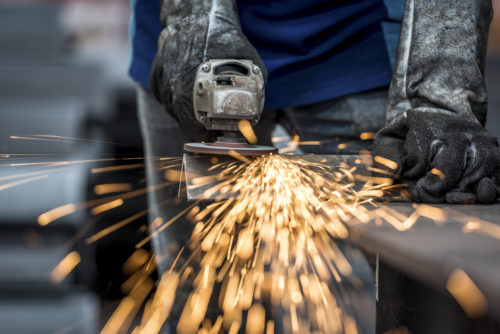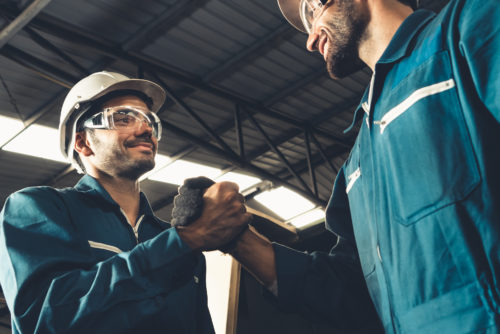Metal Diaphragm Material Selection
Leave a CommentMetal diaphragms are plates of metal built to axially deform and regulate pressure. Various systems across industries use the diaphragms to separate opposing fluids, regulate or cap pressure levels, indicate when pressure levels reach above certain thresholds, and more. For example, food processing, pharmaceutical production, and semiconductor manufacturing all rely on well-constructed metal diaphragms to control dynamic systems. But in each application, the material plays a large role in the diaphragm’s performance.
Keep reading to learn more about the metal diaphragm production process made and choosing an ideal metal material for your specific application.
How are Metal Diaphragms Manufactured?
Metal diaphragm manufacturers incorporate multiple steps into production based on the specifications of the product and details of the application. The diaphragm’s required life cycle, deflection ability, and ability to withstand pressure all influence the profile shape and material selection.
Manufacturers will digitally design and virtually test a diaphragm model in advance of production to solve functionality and manufacturability issues. Creating a computer-aided design (CAD) file allows the design engineer to check for potential flaws before physical prototyping. Based on the specifications of the application, the design engineers will consider the following:
Solid Centers
There are two main types of solid center diaphragms: high-sensitivity low-pressure (HSLP) diaphragms and low-sensitivity high-pressure (LSHP) diaphragms. HSLP diaphragms are often matched with pressure sensors to detect potential fluid breaches and contamination in food, beverage, and pharmaceutical production. LSHP diaphragms typically see use as a failsafe component, as these diaphragms withstand high pressure levels and only open when pressure levels reach a predetermined range.
Selecting a Profile
Metal diaphragms may be domed, corrugated, or flat. Flat metal diaphragms are the easiest to mass produce, but corrugated diaphragms are popular for their linear characteristic curve and ability to deform to a greater degree without incurring damage. The linear curve gives the diaphragm extended range, high sensitivity, and better spring rates. Designers may choose to enhance or modify certain characteristics by specifying the material thickness and the depth or pitch of the corrugation. These features will influence the overall operating life of the diaphragm.
Once the design is complete, diaphragms get produced through metal stamping. Metal stamping processes use a die (or a series of dies) that press into and deform metal stock into the preferred shape. After metal stamping, the completed diaphragms are quite delicate. Manufacturers need to carefully package the items to protect them during storage or shipping.
Read more about our corrugated diaphragm capabilities here.
Choosing a Diaphragm Material
Different metals offer different characteristics and advantages. Some of the most commonly used metals include:
- Inconel®. This material resists abrasion, corrosion, and heat. It retains its characteristics in temperatures above 750°F.
- Haynes® 242®.Haynes 242 is highly ductile and resists thermal expansion up to temperatures of 1,600°F.
- Hastelloy®. Hastelloy features excellent corrosion resistance, tolerates exposure to most chemicals, and can operate at high temperatures for limited periods.
- Titanium. Titanium nitride offers good resistances to abrasion and adhesion, while titanium aluminum nitride diaphragms provide excellent resistances to both.
- Monel®. This material offers good resistance to saltwater and high resistance to corrosion under exposure to non-oxidizing acids.
- 17-7 PH stainless steel. This stainless steel alloy features superior strength and hardness, resists deformation and fatigue, and offers good corrosion resistance.
The appropriate material selection will depend heavily on the intended use case, including the process fluids the diaphragm may come into contact with, operating temperature ranges, and various environmental factors.
To learn more about the materials listed above, read our Choosing Materials Guide.
Diaphragm Manufacturing Considerations
When designing or ordering custom metal diaphragms, pause to consider the various options at each production stage to ensure an optimal solution.
- Design and engineering. During this stage, make detailed CAD files and 3D mockups before physical prototyping begins so the designs can be thoroughly tested and optimized.
- Stamping process. During the metal stamping process, manufacturers can control camber, concentricity, and other factors. Depending on your intended application, you may have unique requirements for the edge burr and tolerance threshold.
- Tooling. Consider how different tooling processes, such as metal-to-rubber or metal-to-metal, will influence production costs, as well as the final product and its performance in the end application. We offer custom tooling, made in-house in our tool room, to all of our clients.
- Packaging. Be sure that the packaging accounts for the fragility of metal diaphragms.
Metal Stamped Components from Hudson Technologies
Selecting the right material for your metal diaphragms is crucial for ensuring the proper performance of your equipment. At Hudson Technologies, we have the experience and expertise to design and create metal diaphragms for any industrial use case. To see how our capabilities can benefit your operation, please contact us today.
Guide to Heat Treating Deep Drawn Stamped Components
Leave a CommentFor applications requiring complex parts and efficient, repeatable manufacturing processes, deep drawn stamping is one of the best processes to use. Deep drawn stamping can manufacture high volumes of parts with a combination of speed, accuracy, and consistency. It also produces parts in a single piece, which helps eliminate assembly requirements. Additionally, deep drawn components are highly durable because of the compression that parts undergo during fabrication.
Deep drawn metal stamping is particularly popular among manufacturers due to the lightweight, high-strength, and conductive properties of metal materials. However, metal can occasionally require additional processes to contribute new properties or tolerances for certain applications. To achieve this, heat treating is often used in conjunction with the deep drawn stamping process for a variety of metal parts.
What Is Heat Treating?
Heat treating processes can modify the mechanical and physical properties of metal while maintaining its shape and overall integrity. It enhances the existing properties of metal while preparing it for additional processing. Depending on the application and specific parts, there are various heat treating processes available, including:
- Entails heating metal to a designated temperature before slowly cooling it. This process is most often used for deep drawn components.
- Involves heating parts to a specific temperature under the critical point within an inert atmosphere or vacuum. This process is used to enhance the strength of iron.
- Used for treating medium-to-high carbon ferrous metals in an effort to produce bainite, which enhances the toughness and strength of metals while reducing distortion.
What Is Annealing?
Annealing is a type of heat treatment process that alters the physical and chemical properties of metals to reduce hardness while increasing ductility for improved workability. What specifically causes the change in properties is the dislocation of the metal’s crystalline structure. During heating, atoms migrate within the crystal lattice and there’s a reduction in the number of dislocations, which causes the metal’s ductility and hardness to change. While cooling and hardening, the heat-treated metal recrystallizes.
To complete this process, different types of machinery are used for annealing, including:
- Vacuum annealing furnace. This equipment is used to perform annealing and aging treatments for many types of alloy materials, stainless steel, magnetic materials, devices, copper, and much more.
- Hump-back (belt) annealing system. This system gets its name from the “humpback” of the raised heating chamber, with entry and exit tunnels on inclines on either side. The design is ideal for applications requiring a controlled hydrogen atmosphere, as heavy air entering the entry and exit doors remains outside the elevated chambers through which hydrogen gas flows.
- Retort heat treat furnace. These furnaces feature sealed vessels, which lay over or around products to separate them and the heat treating space from the furnaces’ heat source and insulation. They enable more control of workspaces involving hydrogen or argon atmospheres for optimum efficiency and accuracy.
Applications of Annealing
Annealing is the primary heat treatment process used for deep drawn components, and it is typically used to treat raw materials or components during formation. Annealing is commonly applied in between forming processes to help maintain the material’s strength while reducing stress and fatigue resulting from the deep draw forming process.
Annealing is often used for treating raw stainless steel alloys such as AM350, which is an alloy containing chromium, nickel, and molybdenum. This blend is conducive to heat treating, as it enhances the material’s strength and formability. When treated, AM350 stainless steel benefits from improved formability without any compromise in corrosion resistance or overall strength.
Custom Deep Drawn Components from Hudson Technologies
If you need dependable deep drawn metal stamping services for a particular application, Hudson Technologies has the resources required to produce top-quality, consistent results. We can produce a wide variety of custom and cost-effective metal parts for use in nearly any industry without the wastage that results from other less efficient processes.
For more information about our deep drawn stamping capabilities, or to learn about how Hudson Technologies can meet your specific requirements, contact us today.
Reducing Lead Times When Manufacturing Metal Components
Leave a CommentMetal fabrication encompasses various processes that turn metal stock material into finished components and goods. Each fabrication method requires a different set of skills, training, and specialized equipment. The time it takes to complete a metal fabrication project can vary widely based on the specific provider, the process used, order volume, design complexity, and many other factors.
Shortening project lead times—the time it takes to manufacture and deliver your order—will bring products to market faster. While it may be tempting to implement any time-saving measure that comes along, cutting corners can lower product quality. This blog post will discuss some of the methods for shortening lead times in metal fabrication without lowering your project standards.
Lead Times and Metal Component Manufacturing
Manufacturers may incorporate a variety of metal fabrication techniques during the production process. Typical metal fabrication processes include:
- Metal stamping. The metal stamping uses a series of tools and dies to make various cuts and impressions on sheet metal, ultimately forming the metal into a specified design.
- Deep drawing. In metal drawing, sheet metal is pulled into a die using a punch to form a hollow shape. A deep-drawing process creates a component with a depth greater than its diameter.
- Cutting. A variety of cutting processes exist to reduce sheet metal or bars into smaller sections. Examples of cutting equipment used in manufacturing include lasers, plasma torches, and various mechanical cutters, such as saws.
- Folding. Folding creates angles by bending the metal to a specified degree. Folding is a delicate process requiring specialized presses that can fold sheet metal without tearing it.
- Machining. Machining is a reductive process, removing material from stock bars and blanks to form the desired component. The most common machining processes use a turning machine or a milling machine.
- Drilling. Drilling creates holes in the metal workpiece for fitting or attaching components.
Each of these processes offers different lead times. When engaging a provider for a metal fabrication project, ask the following questions:
- How will your current order backlog impact lead times for my project?
- How will the complexity and tolerance requirements of my part impact lead times?
- Are there alternate materials, hardware, or tooling that could shorten lead times without impacting quality?
- Is there a way to limit the need for secondary or specialized processes to reduce lead times?
Tips for Reducing Metal Component Manufacturing Lead Time
Numerous factors beyond the shop floor can have an impact on project lead times. Some tips to reduce lead times with your metal fabricator include:
- Purchase standard components instead of fully custom orders when feasible.
- Complete the prototyping and testing phases on customized parts to avoid problems and delays during the full production run.
- Reduce communication and shipping complexity by using a domestic or nearshored manufacturer.
- Consider adding kitting or assembly to your order to reduce lead times after order completion.
- Streamline inventory management with Just-in-Time and Lean inventory practices.
- Evaluate and improve internal communication processes.
- Choose a highly skilled and reliable supplier.
Other Manufacturing Timeline Considerations
Carefully choosing your manufacturing partner is one of the most critical decisions you can make to streamline your lead times. Your choice of manufacturing partner can impact your project lead times in a variety of ways. To make sure your partner won’t contribute to longer project times, make sure that they have:
- Reliable material suppliers
- Efficient prototyping, sampling, and test run capabilities
- Willingness to build a long-term partnership that streamlines costs and processes
- Proximity to your location to minimize transport times
- A comprehensive portfolio of in-house services (instead of using a variety of third-party providers)
If your manufacturing partner has not demonstrated consistent repeatability, reliability, and conformance to tight timelines and tolerances, it is better to switch suppliers sooner rather than later.
Metal Component Manufacturing from Hudson Technologies
Hudson Technologies has a long history of successful partnerships, offering state-of-the-art in-house capabilities, skilled staff, and adherence to quality standards. For more information about our services, please visit our capabilities page or contact us today.






